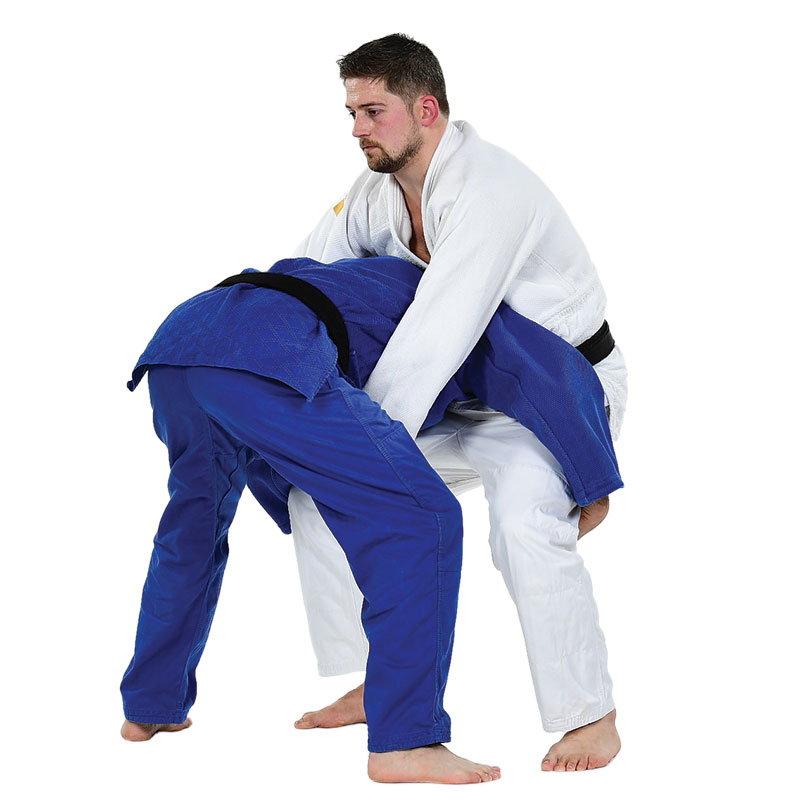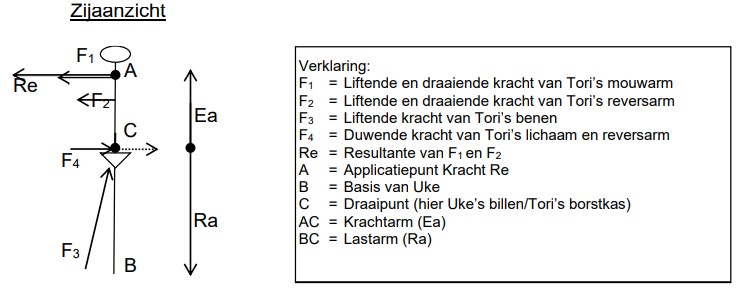Tawara-gaeshi 俵返 (“Rice Bag Reversal”)
Category: Ma-sutemi-waza (rear sacrifice technique)
Translation: “Tawara” means a traditional rice straw sack, “gaeshi” means reversal. The name evokes the motion of flipping a heavy sack over.
Description
Tawara-gaeshi is a rear sacrifice counter used when uke bends deeply forward, often in an attempt to execute a lifting throw or during groundwork transitions.
Tori leans over uke’s back, wraps both arms tightly around the torso — much like embracing a rice bag — and pulls uke upward using their arms and body while falling backward. This causes uke to be lifted and flipped over tori’s head, landing on his back.
It’s a throw that relies heavily on timing and body contact, exploiting uke’s forward-leaning posture to turn their momentum against them.

Biomechanics of Tawara-gaeshi
-
Type: Lever throw
-
Support point (C): Created by tori’s back/torso under uke’s center of gravity.
-
Force vectors:
-
F3: Legs/back drive uke upward.
-
F4: Arms wrap and pull uke tightly inward.
-
F1/F2: Hands and body maintain close grip and lift.
-
-
A centrifugal force component is created as uke’s body is rotated in an arc over tori’s head.
-
Requires tori to fully commit to the fall while maintaining tight control of uke’s core.

Did you know?
-
The term “Tawara” refers to the classic straw-wrapped rice sacks once used for transport in Japan. The image of flipping such a sack backwards is exactly what this technique mimics.
-
Tawara-gaeshi is a rare but spectacular throw, occasionally seen in Kata and older judo demonstrations, but seldom used in modern competition due to the complexity of timing.
-
A close cousin of this throw is Daki-wakare, though the entry and execution differ — Tawara-gaeshi involves more lifting and centrally aligned body contact.